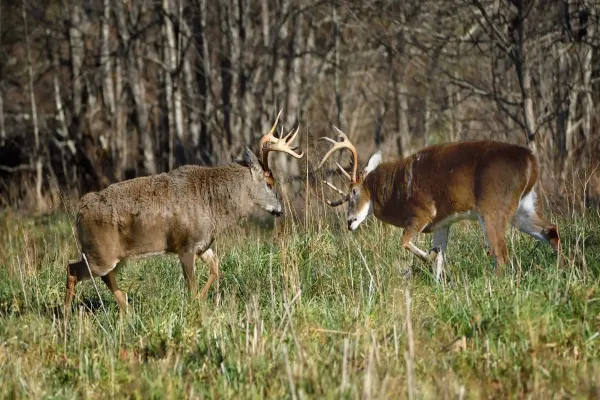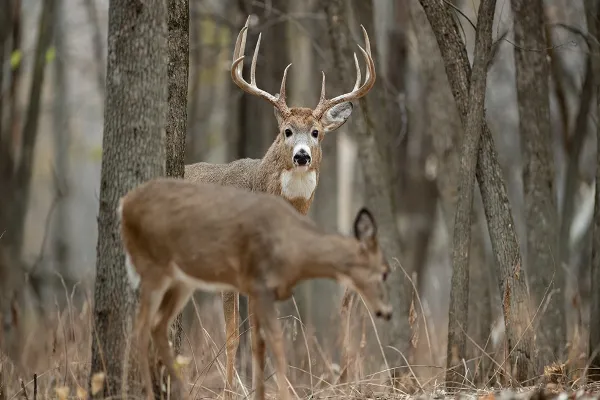In the Heat of the Rut: Finding the Best Time to Hunt Deer
There’s a certain electricity in the woods when the rut begins. You feel it before you even see it—frost on the leaves, a sharpness in the air, and an urgency pulsing through the forest. Bucks that were once ghosts—cautious, nocturnal animals—begin to wander with reckless abandon.
Trails that were quiet weeks ago now hum with activity, as dominant males search for does and challenge rivals. For whitetail hunters, the rut is both a celebration and a mystery. Knowing the best time to hunt deer during this period isn’t just about dates on a calendar—it’s about understanding biology, behavior, and your own instincts in the stand.
For many hunters, the rut marks the pinnacle of the deer season. But the term “rut” is often misunderstood. It’s not one singular event—it’s a process, a cycle, and like all natural rhythms, it unfolds gradually. The rut can be broken down into phases: the pre-rut, peak rut, and post-rut. Each phase offers its own opportunities, and timing your hunts around these shifts can mean the difference between coming home empty-handed and dragging a buck through the leaves.
In the pre-rut, which often begins in late October depending on your region, bucks begin laying down signposts—rubs, scrapes, and subtle trails that mark their territory. They’re still wary, still nocturnal for the most part, but their focus starts to drift. They spar more frequently, scent-check bedding areas, and begin expanding their core range. This is a golden time for hunters who have done their scouting.
Bucks are patternable, somewhat predictable, and can still be intercepted as they work the edges of their territories. For bowhunters especially, this period provides windows of daylight activity without the chaos of full-blown rut behavior.

Then comes the chase phase, often the most exhilarating—and most frustrating—time to be in the woods. This is where bucks are on their feet for hours, running does and covering ground in desperation. It’s a beautiful frenzy, but it can be maddening too. One morning you’ll see a parade of activity; the next, your woods may go silent. That’s because once a buck locks onto a hot doe, he’ll stick close to her until she’s bred, often pushing her into cover and staying hidden for days.
Still, this is the time when the big ones slip up. Mature bucks that typically avoid open daylight begin moving at all hours. Hunters who can stay in their stand all day, especially near known doe bedding areas, have the best chances. This is not a time to hunt casually—this is the marathon stretch, and those willing to put in full days often reap the reward.
Perhaps the most overlooked period is the late rut, or post-peak. As the majority of does are bred, bucks continue to cruise in search of the last few receptive females. Many hunters pack it in too early, not realizing that some of the most calculated buck movement happens in this window.
The chaos is over, but what remains is strategy. Bucks are tired, worn thin from the chase, but they’re still driven by instinct. During this phase, returning to stand locations that showed early rut signs can be productive, especially when combined with fresh sign or recent trail cam intel. Cold fronts during the late rut can reinvigorate activity, offering a second wind to bucks and hunters alike.
But what, then, is the best time to hunt? Is it the early hint of October’s pre-rut, or the heated battles of early November? The truth is, it depends—on your goals, your location, your style. In the Midwest and much of the Northeast, the first two weeks of November are considered prime time. This aligns with peak breeding and high buck movement. In Southern states, the rut may not kick in until December or even January. Understanding your local herd’s behavior—and tracking it year after year—is far more useful than following generalized dates.
Weather also plays a role. A cold front dropping temperatures overnight can ignite activity across all rut phases. Wind direction influences buck travel and scenting routes. Moon phases, though debated, may influence timing of daylight movement, especially during the peak. But more than any of these factors, time in the woods remains your greatest ally. No chart or article can compete with what your own eyes and ears tell you.

There is something timeless about hunting the rut. It’s not just a window of opportunity—it’s a window into nature’s rawest instincts. The woods become a stage for one of the wild’s oldest dramas, played out in scrapes and rubs and the crashing of antlers through the timber. For a few precious weeks, the forest feels alive in a way it never does before or after. And for the hunter, that aliveness is a gift—if you know when to be there.
So, what’s the best time to hunt deer in the rut? The answer lies in the rhythm of your woods, the stories left behind in hoofprints and shredded saplings. It lies in the morning frost that stings your face and the evening silence just before a buck appears. The best time is when you listen, watch, and learn—not from a calendar, but from the forest itself.
FAQ Section
Q1: What is the best time of day to hunt deer during the rut?
Deer activity can peak all day during the rut, but early morning and late afternoon remain prime. Midday movement also increases, especially during the chase phase, making all-day sits highly productive.
Q2: Which rut phase is best for hunting mature bucks?
The chase phase, just before peak breeding, often sees the most daylight activity from mature bucks. This is when they cover ground in search of does and are more likely to slip up.
Q3: How does weather impact rut hunting?
Cold fronts can significantly increase deer movement. A sudden drop in temperature often sparks intense rut activity, especially if it follows warmer weather.
Q4: Can you hunt the rut successfully without a lot of scouting?
While scouting helps, hunting near known doe bedding areas during the rut can still produce results, even with minimal preseason work. Bucks will naturally frequent these areas in search of does.
Q5: Does the rut happen at the same time everywhere?
No. Rut timing varies by region. In the Midwest and Northeast, it usually peaks in early November, while in parts of the South, the rut can occur as late as January.
Author Bio: Ana Milojevik
Ana Milojevik is a passionate wildlife writer and lifelong deer hunter with a deep respect for nature’s rhythms. Her writing bridges personal field experiences with evidence-based insight, helping hunters connect with both the animal and the moment. With years spent tracking whitetails through rut season across various terrains, Ana writes to preserve the spirit of ethical hunting and the timeless lessons the forest teaches us each fall.